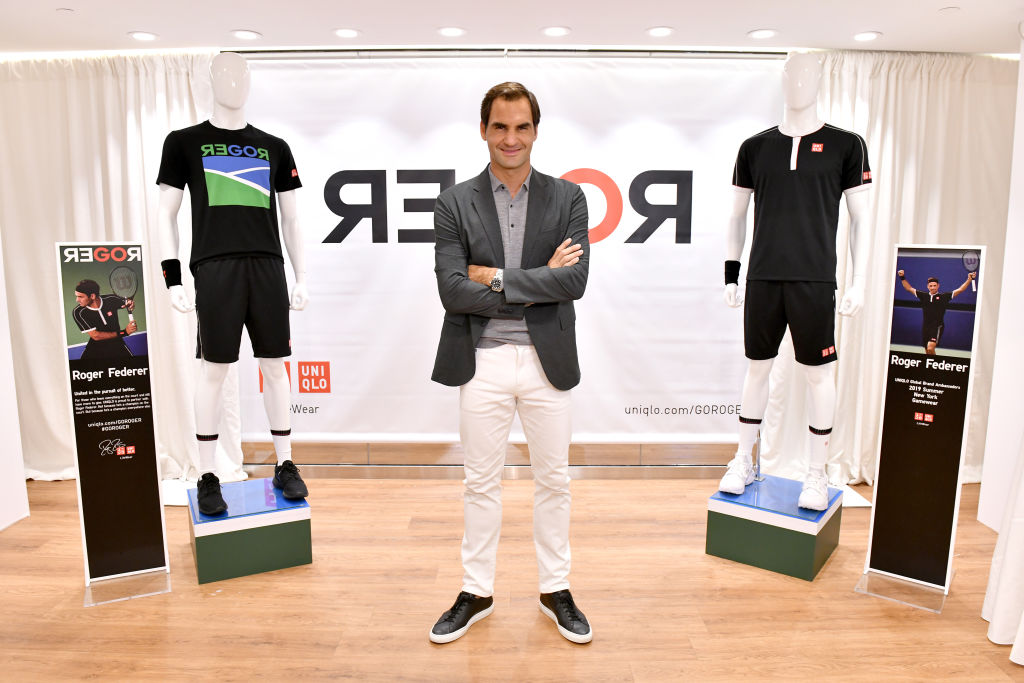Tennis
The Real Reason Why Roger Federer Ditched Nike For Uniqlo

From LeBron James to Tom Brady, star athletes often sign endorsement deals with major apparel companies. Surprisingly, some of the most lucrative sponsorships occur in men’s tennis. For instance, tennis champion Roger Federer had a relationship with Nike for many years. Then, in 2018, he shocked everyone by leaving Nike and signing with clothing company Uniqlo.
Let’s look at the details of that surprising endorsement deal, as well as the factors that convinced him to leave Nike for Uniqlo.
Roger Federer’s relationship with Nike
Before getting into the details of Federer’s recent deal with Uniqlo, it’s important to emphasize just how surprising his move was. The superstar had a long, lucrative relationship with Nike since 1994. In other words, Federer had worked with the sportswear giant for around two dozen years.
The terms of Federer’s Nike contracts naturally changed over time, with the value of the deals generally rising. The last one he signed with Nike brought in around $10 million a year, covering a 10-year span. As the time drew to a close, apparently Nike couldn’t put together a sweet enough deal to keep Federer.
Federer’s new deal with Uniqlo
Rumors about Federer’s new deal with Uniqlo made rounds in the tennis world long before an official announcement. He finally confirmed the change in a spectacular fashion: by appearing on the Wimbledon court wearing Uniqlo gear. Specifically, Federer wore a white polo with a stand-up collar with Uniqlo’s branding displayed on the chest and sleeve.
Sports insiders reported that the Uniqlo deal will net Federer a staggering $30 million per year — basically three times as much as his last Nike deal. This kind of pay bump makes it easy to see why Federer chose to shake up his endorsement loyalties. Like Federer’s last deal with Nike, the Uniqlo contract covers a 10-year span.
Many analysts considered it a curious move to sign the then-36-year-old to a deal that may extend beyond his playing years. Yet Uniqlo was clear that they view Federer as an asset whose value will grow. The tennis star has always been one of the most stylish pro athletes. Uniqlo feels confident they can leverage that image and influence to their benefit for years to come.
A small complication for Federer
At first glance, Federer’s deal with Uniqlo looked like a total win. With one fell swoop, he tripled his endorsement income, while ensuring he’d keep collecting even when his playing days end. Yet whenever an athlete breaks ties with a company who they worked with for over 20 years, complications ensue.
In this case, the problem had to do with Federer’s special “RF” logo, which adorned all of his sportswear produced by Nike. While the logo pays homage to Federer’s initials, this doesn’t mean it belongs to him. Quite the contrary, Nike still owns the rights to the logo, so it can’t be used on Uniqlo gear.
Initially, Federer expressed his hope that Nike would graciously give him the rights to his logo. Nearly a year after the Uniqlo announcement, however, Nike still refused to grant Federer the logo.
Uniqlo, meanwhile, says they had no plans to formally purchase the logo from Nike. At this point, the best route may be waiting five years, when Federer can legally claim the expired logo.
Follow more updates from Sportscasting on our Facebook page.











